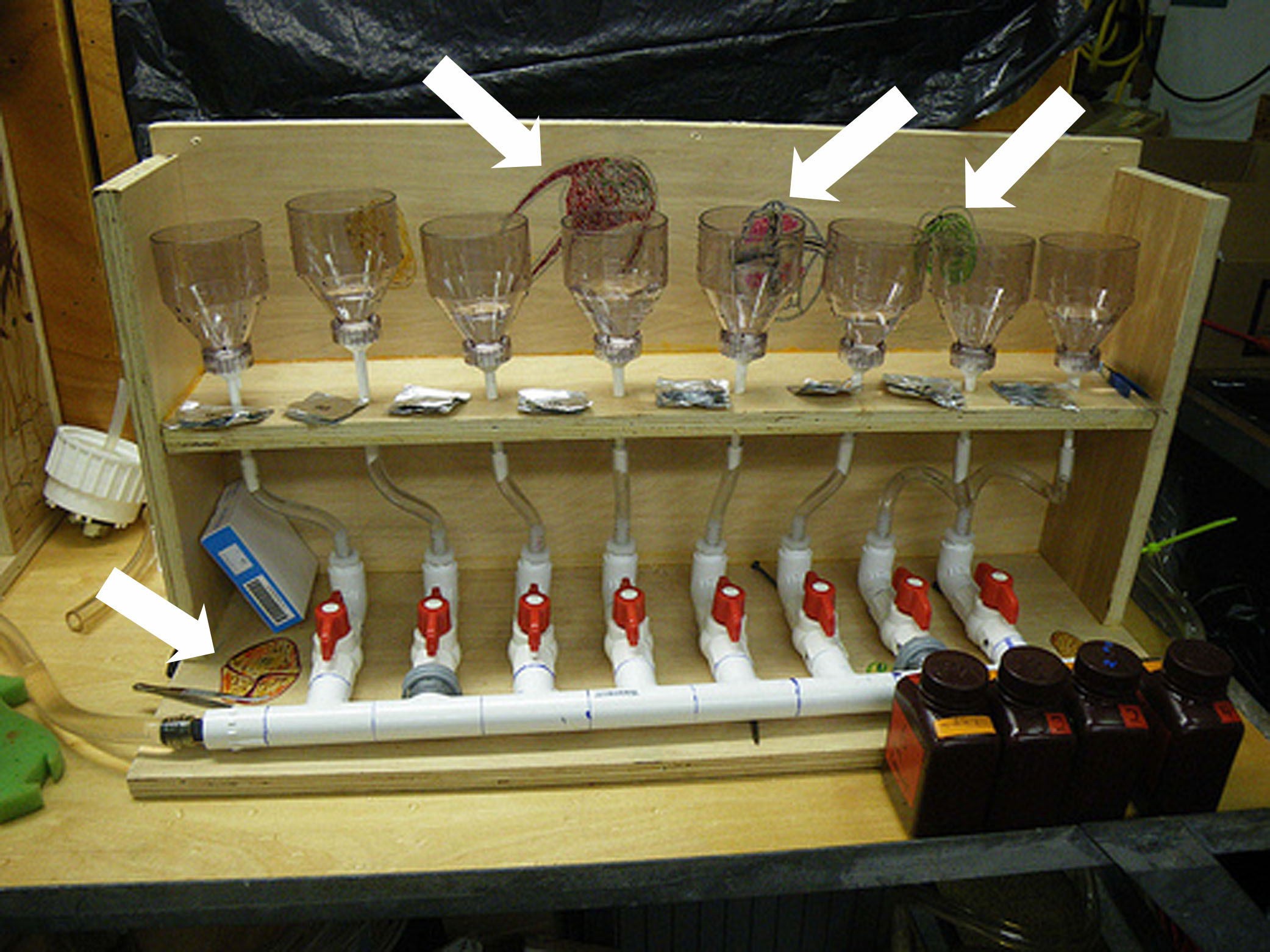
White arrows indicate graduate student sharpie art.
Credit: Alexandra Freibott
by Alexandra Freibott
I am a biological oceanographer and I study plankton – microscopic floating plants and animals. That means to do my research, I filter seawater – liters and liters of it. Why? Well, in order to study the small plankton in the ocean, you can’t use a net; they’ll slip right through even the smallest net. So, first I collect a lot of seawater with a specialized container called a niskin bottle (basically a tube with opening and closing ends that capture water), then I need to concentrate and separate the plankton from the seawater. To do this, I use an incredibly important piece of oceanography equipment: a filter rack. To use a filter rack, you pour the seawater sample into specialized screw-on cups, hook the entire the entire system up to a vacuum pump that sucks all the seawater through a thin plastic filter membrane, and catch all the plankton you want to study on the thin filter membranes. I typically filter seawater through filter membranes that catch very small things (less than 1 micron or 1/10000 of a centimeter!) so that I can catch even the tiniest plankton. I then use these filtered samples for lots of different analyses, from genetics to microscopy, to figure out what plankton are there, how many there are, and what they’re doing.
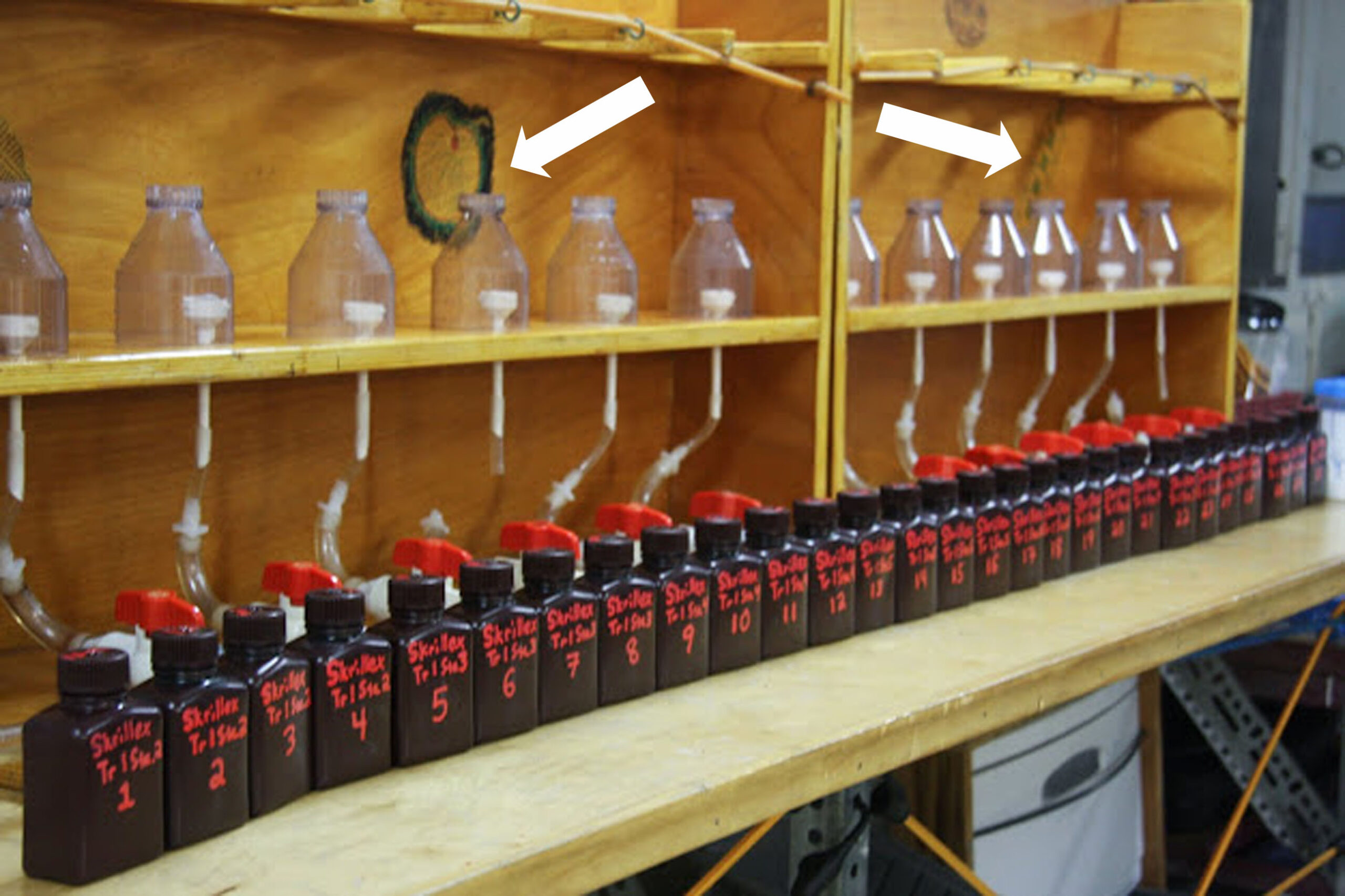
More sharpie art (white arrows)
Credit: Alexandra Freibott
But, filter racks aren’t just use to study plankton. Measurements of chlorophyll (the light-absorbing pigment in plants), nutrients, and trace metals in seawater all require using filter racks. So, to underscore just how important the filter rack is to oceanographic research, here is a selection of the many filter racks I have come across in my research.
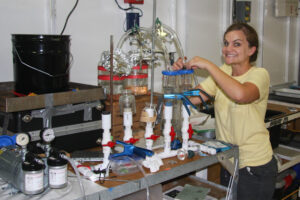
PVC filter racks: the humblest form of filter rack.
Credit: Alexandra Freibott
Filter racks come in all shapes, sizes, colors, and levels of sophistication, including lovely hand-crafted solid wood creations complete with the artistic stylings of bored graduate students.
Personally, my favorite type of filter rack is the humble pvc-pipe version that many young oceanographers create themselves after a trip to the nearest hardware store. With some pvc pipe, cementing glue, and bright red on/off valves, you can create a custom, spiffy looking filter rack all your own.
Filter racks are multi-purpose too – who needs a darkroom when you can toss a blanket or spare garbage bag
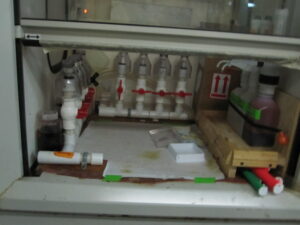
PVC filter racks: the humblest form of filter rack.
Credit: Alexandra Freibott
over the entire filter rack to protect samples filled with light-sensitive plankton?
Sometimes, it’s not necessary to have an entire rack of filters when just one filter will get the job done.
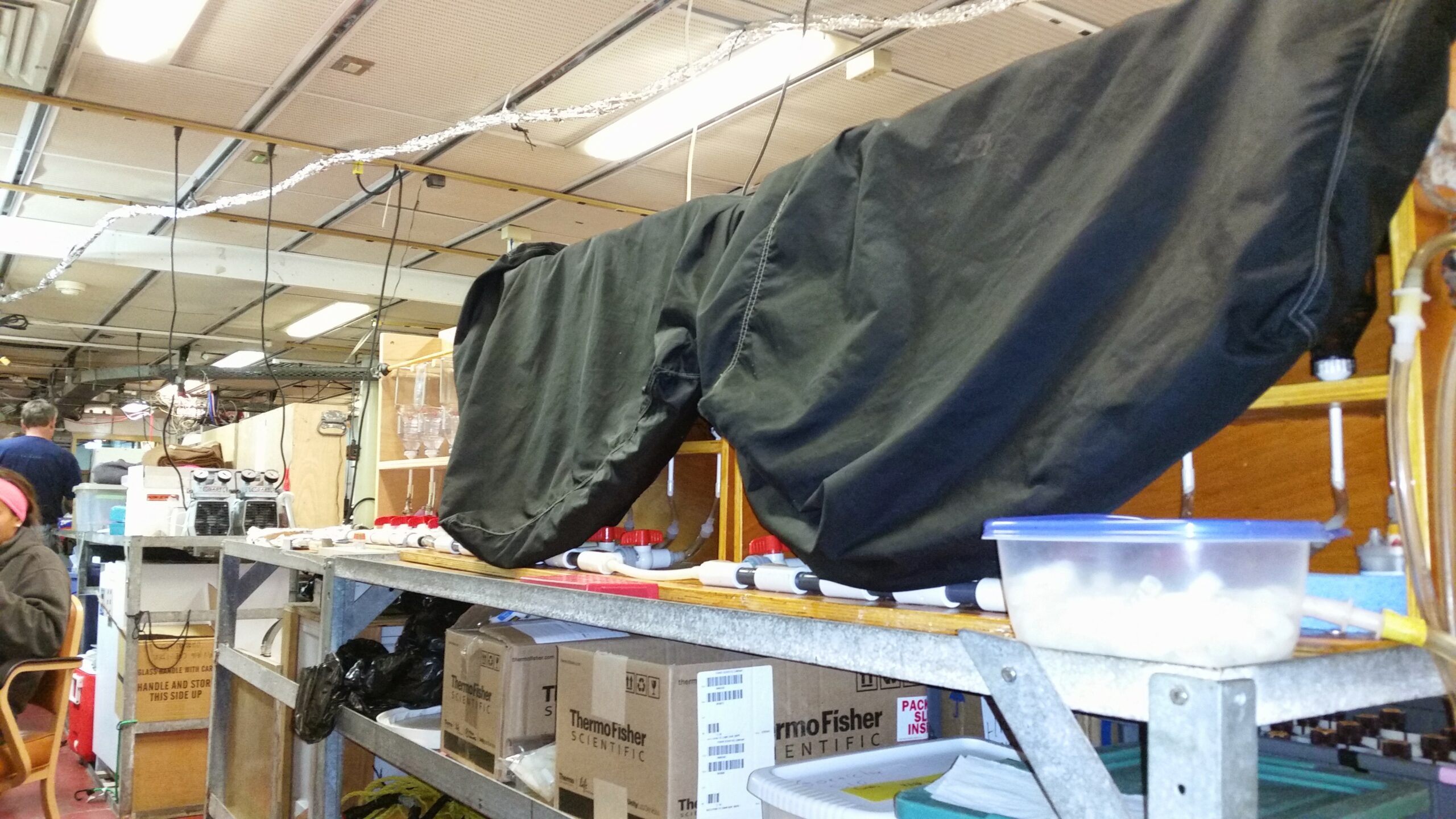
The filter rack shaded from the light
Credit: Alexandra Freibott
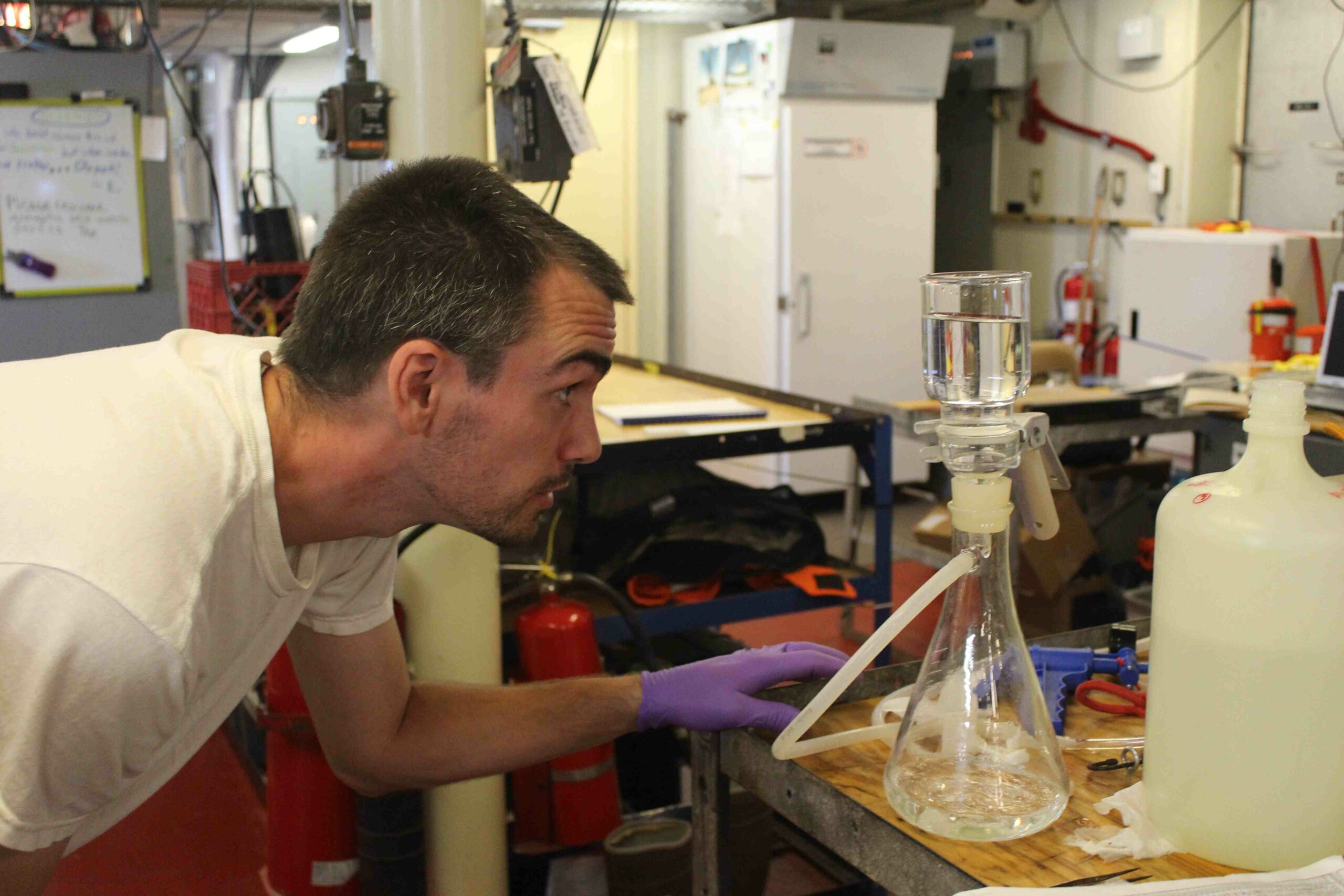
It is debatable whether or not watching the seawater filter makes the process go any faster.
Credit: Alexandra Freibott
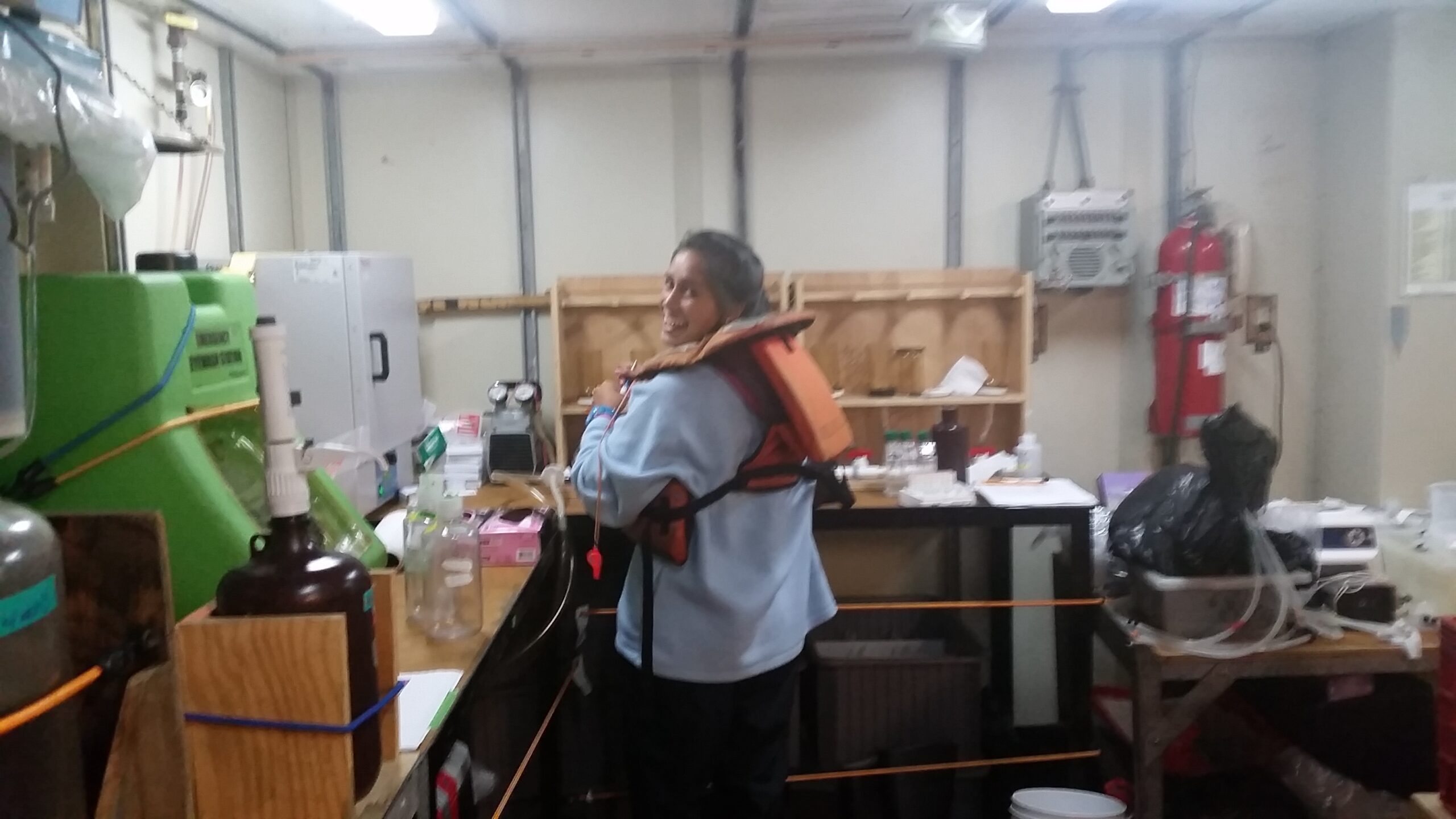
And when you’re at sea, sometimes you might need to filter with your life vest on inside the lab – just in case.
Credit: Alexandra Freibott
But most importantly, biological oceanographers need to remember to smile while doing all that filtering because it gets us all the samples we need for our research.

A happy lab team is the best kind of lab team!
Credit: Alexandra Freibott

Ali is a PhD candidate at Scripps Institution of Oceanography in San Diego, California and studies microbial ecology in the California Current. She is an avid reader and enjoys taking her dog Louie for long walks on the beach during work breaks.










